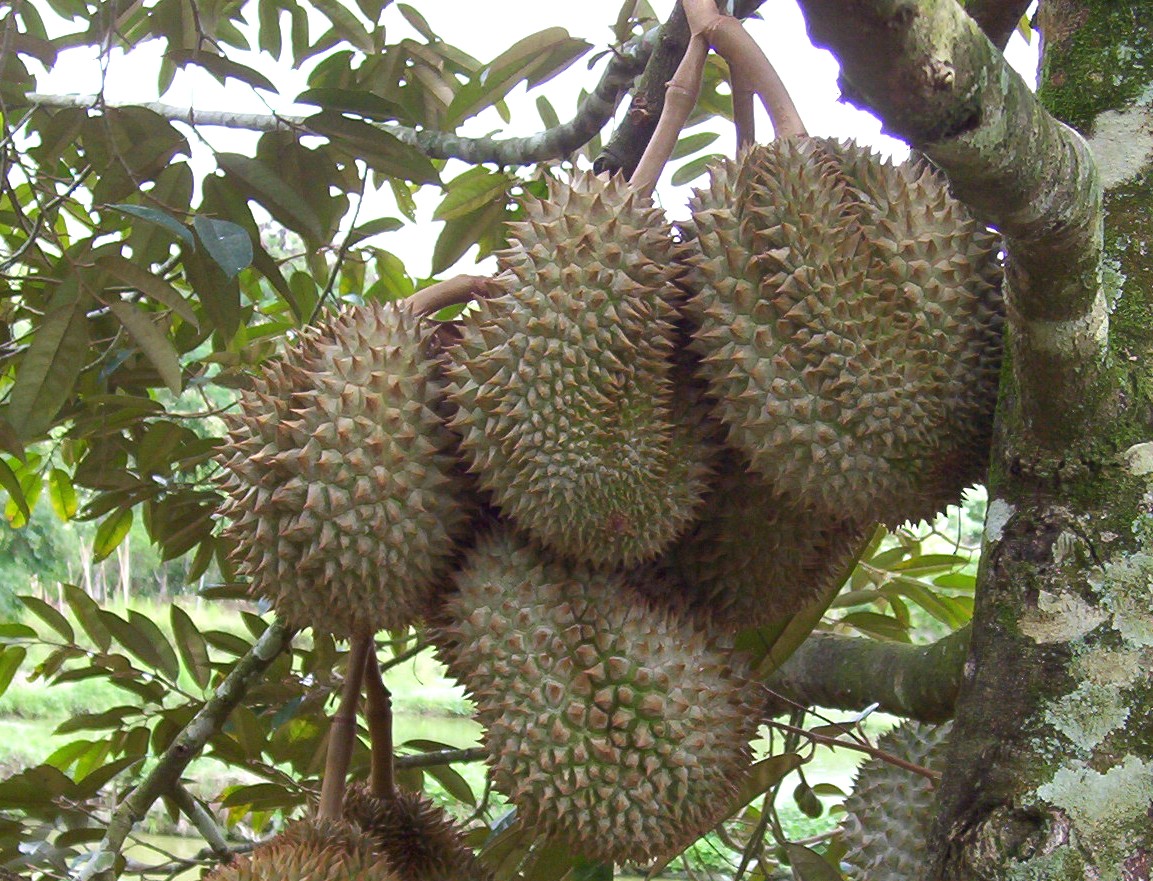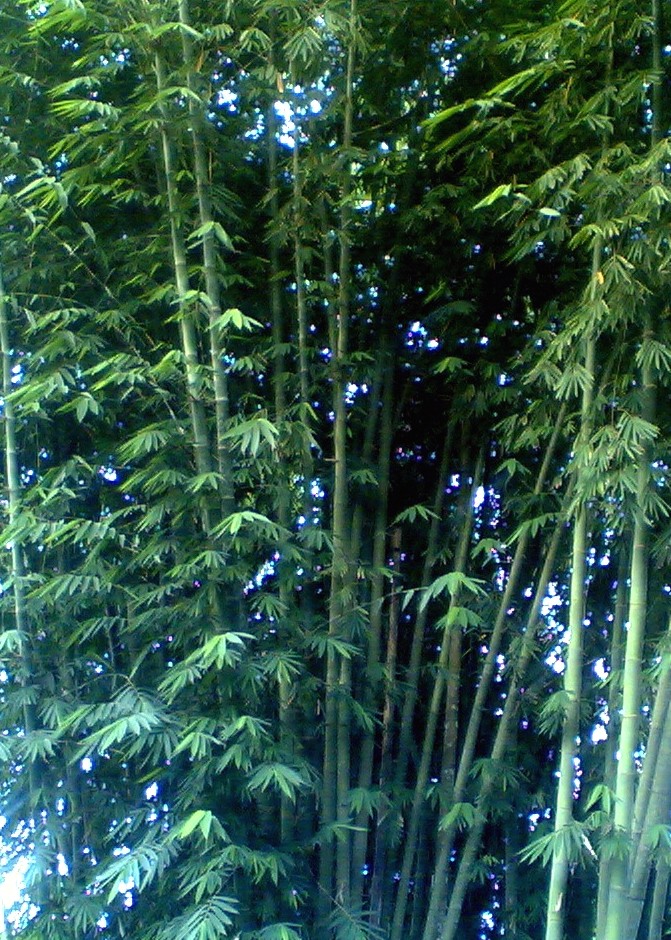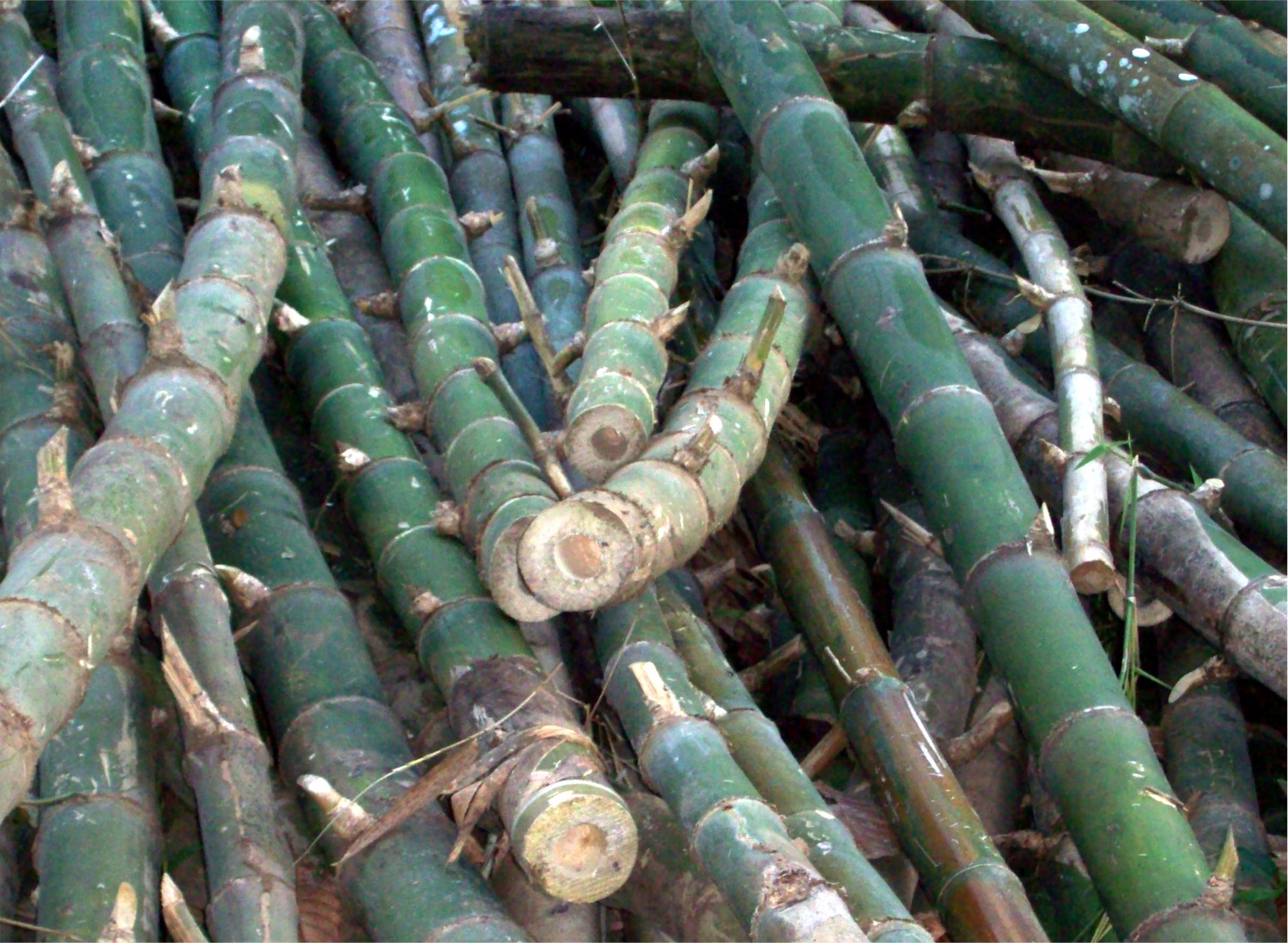Text and Photos by Henrylito D. Tacio
If Filipino farmers are looking for viable crops that will not only address the problem of climate change but also give them a decent income, then they should consider planting durian and bamboo on their farms.
Respected atmospheric scientists claim that one way to curb the release of carbon dioxide and other greenhouse gases into the atmosphere is by sequestering them. Trees have been identified as the most capable of doing so.
Science says that by means of photosynthesis, trees absorb carbon dioxide and then store the carbon. This process is called carbon sequestration.
“Carbon is stored in the leaves, stems, and other parts of plants when they absorb carbon dioxide from the atmosphere and use it to grow,” explains the United States Department of Agriculture (USDA). “Trees are very important for carbon sequestration because they live a long time and, therefore, store their carbon for many years.”
Instead of planting just any kind of trees, some experts are recommending durian, which the Davao region is noted for.
“The best tree to plant is durian,” says Jethro P. Adang, the new director of the Mindanao Baptist Rural Life Center (MBRLC) in Kinuskusan, Bansalan, Davao del Sur. “The durian does not only help sequester carbon dioxide but it also bears fruits.”
The durian fruit is in big demand not only in the Philippines but in other countries as well, particularly those with overseas contract workers and Filipinos who have already changed their citizenship.
“Durian, of course,” replied Dr. HIlario Lapeña, a Filipino physician who now resides in Canada, when asked what is his most favorite fruit. “Nothing beats it. I have tasted lots of exotic fruits but I still go back to my all-time favorite – durian. Friends who used to say that they hated it are now converts.”
There’s money in growing durian. You better ask Atty. Antonio B. Partoza, Jr., who once appeared on the cover of the monthly publication Agriculture Magazine. He never imagined “the fruit that smells like hell but tastes like heaven” would bring him some clout and prestige when he ventured into durian farming in 1987.
Being the fruit basket of the Philippines, he thought of durian – particularly the “arancillo” variety – as a way of promoting Davao into the world.



“His perseverance to showcase Davao’s pride through the continued production of homegrown Durian has gained the recognition of the agricultural industry,” someone commented. Aside from Agriculture magazine, he was featured in various local and national papers and even the in-flight magazine of SilkAir.
What makes his durian fruits unique is that they are taken from trees that are grown organically. As one of the pioneering advocates of natural farming, Partoza uses indigenous materials from the farm as fertilizer instead of relying on expensive commercial chemical fertilizer. The success of his venture made him earn the sobriquet Durian King of Davao.
Although the fruit is banned in most of the world (because of its “foul-smelling odor”), there is an increasing demand for it in the export market. Durian is called “exotic tropical fruit” in North America and Europe, where customers offer premium prices. Durian is also highly regarded in other Asian countries, including Japan and Singapore.
There are several varieties of durian grown in the Philippines. The most important ones, commercial-wise, according to the Laguna-based Philippine Council for Agriculture, Aquatic and Natural Resources Research and Development (PCAARRD), are Chanee, Mon Thong, Alcon Fancy, Arancillo, Atabrine, Duyaya, GD 69, Lacson Uno, Mamer, and Puyat.
Aside from durian, bamboos can also help mitigate the impacts of climate change. Experts say bamboos absorb huge amounts of carbon dioxide. Studies have shown a hectare of bamboo sequesters 12 tons of carbon dioxide.
“A number of bamboo species are potential tools for carbon sequestration and combating climate change,” Hans Friederich of the International Bamboo and Rattan Organization (INBAR) reports.
“Bamboo plants store carbon at a fast rate, and bamboo products can effectively ‘displace’ more emissions-intensive materials such as cement, steel and plastic,” Friederich points out.
Recent INBAR research suggests (well-managed) bamboo can store 200 to 400 tons of carbon per hectare per year. “With such high carbon storage rates, there is clearly potential for countries to integrate bamboo into their climate mitigation plans,” he says.
As Patricia Espinosa, executive secretary of the United Nations Framework Convention on Climate Change, puts it: “Bamboo and rattan can make an important difference in the fight against climate change. Nature-based solutions like bamboo do not just contribute to sustainable development, they also help build the kind of world we want.”
As this developed, Senator Loren Legarda said the country’s bamboo sector requires technical and fiscal support from the government to make it more competitive in both local and international markets.
“The lack of technical knowledge, promotion and local research on bamboo hinder the development of the local bamboo industry. Bamboo offers a cheaper alternative to hardwood, timber and other raw materials used for furniture or handicraft making. We need to invest more on research and development, bamboo cultivation, processing and product development to spur economic activities,” she said.
Legarda has long been advocating the use and promotion of bamboo in the Philippines as a climate change mitigation and disaster resilience tool. “Bamboo plays an important role in climate change mitigation as it absorbs more carbon dioxide and releases more oxygen into the atmosphere than trees,” she stressed.
The National Greening Program (NGP) listed bamboo as among the preferred species for reforestation. Bamboo will help boost the supply of food, products (timber, fiber, non-timber forest products), and services and provide aesthetic value to the environment.
There are a million other uses of bamboo. A Reader’s Digest feature described bamboo as “delicate enough to be used in phonograph needles, yet strong enough to be used in bridge construction.” As such, bamboo can replace or indirectly decrease consumption of three critically scarce resources: wood, metal, and oil.
In the Philippines, bamboo is indispensable in the fishing and banana industry, particularly in Davao region. Fishermen use bamboo as a material for making rafts, fishing rods, outriggers for bancas, and for fishpens, like those used in tilapia culture in Lake Sebu.
In salt-water areas, bamboo is used as stakes in the culture of mussels and oysters.
In Maasin, Iloilo, bamboo charcoal is one of its major products. The company Iloilo Kawayan Marketing is reportedly producing the charcoal that is considered to be a natural product and is ecologically friendly.
Bamboo grows anywhere in the country. Often, it grows on marginal farm areas, not much good for anything else. “It is a pity that we have neglected this important crop for so long,” deplores Adang.
Meanwhile, a new flagship report from the United Nations on climate change indicating that harmful carbon emissions from 2010 to 2019 have never been higher in human history is proof that the world is on a “fast track” to disaster.
“This is not fiction or exaggeration,” said UN Secretary-General Antonio Guterres. “We are on a pathway to global warming of more than double the 1.5-degree Celsius limit,” that was agreed in Paris in 2015.
Providing scientific proof to back up the damning assessment, the report from Intergovernmental Panel on Climate Change (IPCC) – written by hundreds of leading scientists and agreed by 195 countries – noted that greenhouse gas emissions generated by human activity have increased since 2010 “across all major sectors globally.”
“We are at a crossroads,” IPCC Chair Hoesung Lee deplored. “The decisions we make now can secure a liveable future.”
And it is for these reasons that Filipino farmers should plant durian and/or bamboo in their farms.
“Let’s plant more durian or other fruit trees and bamboos,” Adang urges. “Aside from providing livelihood for our farmers, we are also helping our environment from heating too much.”

